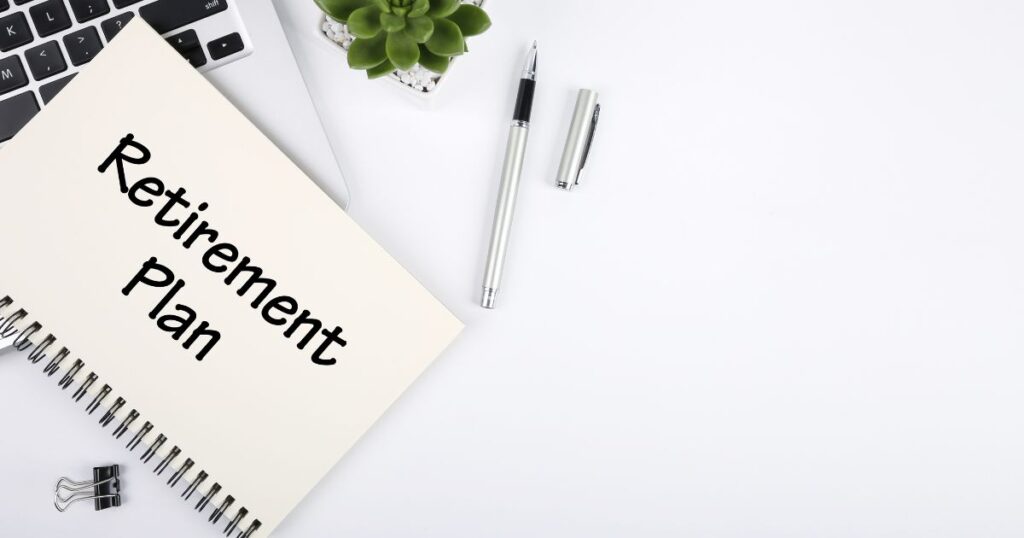Retirement may seem ages away when you’re just starting your career and adult life. However, retirement planning in your 20s and 30s sets you up for long-term financial success. Starting retirement savings early allows more time for compound growth through interest and investments. By actively planning and saving for retirement early on, you ensure you can enjoy your golden years comfortably. Follow this essential retirement planning advice for your 20s and 30s.
Take Advantage of Your Company’s 401(k) Plan
If your employer offers a 401(k) retirement plan, sign up and contribute as soon as possible. Many companies allow you to enroll on your start date. 401(k) plans feature tax advantages that boost savings. Contributions come directly from your paycheck either pre-tax or as a Roth after-tax. This makes saving simple and automated.
Contribute enough to get any employer matching funds, as that’s free money. If your budget allows, max out annual contribution limits. That’s $22,500 in 2023 for those under 50. You likely can’t hit that number right away. Start small if needed, say 3-5% of income, and increase the percentage annually. The key is to start as early as possible to benefit from compound growth over time.
Open and Fund an IRA
In addition to an employer-provided plan, open and fund your own IRA (Individual Retirement Account). Options include a traditional IRA with tax-deductible contributions or a Roth IRA with after-tax dollars that grow tax-free. Max out contributions, which is $6,500 in 2023 for those under 50.
Consistently funding IRAs in your 20s and 30s will generate substantial retirement savings. For example, contributing just $300 per month to an IRA from age 25 to 35 at a 6% return equals over $67,000 (Source). Think of your IRA as an easy way to build wealth for the future.
Choose Investments Wisely
When contributing to retirement accounts, you also need to select where the money is invested. Take time in your 20s and 30s to learn about smart investing for retirement savings. Generally, you should invest primarily in stocks/equities when younger and then shift to more conservative fixed-income options like bonds and CDs as you age.

Building a diversified portfolio with a mix of index funds, target date funds or ETFs offers exposure to stocks and bonds. Workplace retirement plans and IRAs allow you to choose from investment options to align with your risk tolerance and timeline. Learn investing basics and seek input from financial advisors.
Develop a Monthly Household Budget
Creating and sticking to a monthly budget in your 20s and 30s enables you to allocate savings for retirement. Account for all income sources and normal living expenses like housing, transportation, food, utilities, debt payments, entertainment, etc. Identify areas where you can trim spending to free up money for retirement contributions.
Building a budgeting habit early also helps detect excess spending that could negatively impact retirement goals. Tools like Mint, You Need a Budget and Personal Capital make budgeting easier. Maintain a budget that aligns with values and long-term priorities.
Avoid Lifestyle Inflation
As income rises in your 20s and 30s, avoid “lifestyle inflation” where spending increases proportionally. It’s tempting to spend more on housing, cars, dining, vacations and other luxuries as earnings grow. But maintaining a level of frugality even with pay raises enables greater savings. Funnel income gains directly into retirement accounts through automated increases. Keep lifestyle inflation in check by living below your means.
Take Advantage of Health Savings Accounts
Health savings accounts (HSAs) offer a triple tax benefit when used in tandem with a high-deductible health plan. Contributions are pre-tax or tax deductible. Growth on investments is tax-free. Withdrawals for healthcare expenses are also tax-free in retirement. HSAs make tax-advantaged saving for healthcare costs easy.
Contribute up to yearly limits, which are $3,850 for individuals and $7,750 for families in 2023. If you have the funds, maxing out contributions makes HSAs a powerful retirement savings tool. The accounts follow you even if you change employers or health plans.
Save Any Windfalls
When unexpected financial windfalls come your way in your 20s or 30s, save them if possible rather than spending on wants. Use work bonuses, tax refunds, gift money, inheritances or other surprise funds to pad retirement accounts.
Even occasional small windfalls make a difference over time. Turning an annual $2,000 bonus into retirement contributions for 10 years could grow to nearly $400,000 by age 67 (at a 10% return). Get in the habit of investing windfalls early.
Review Estate Planning Documents
It may seem odd to think about estate planning in your 20s and 30s. However, it’s wise to have certain documents drafted when establishing financial independence, getting married, buying property or having children. These documents provide protection for you and your assets if the unexpected occurs.

At minimum have a will, advance healthcare directive, powers of attorney, and life insurance policy. Review beneficiaries on all accounts too. Revisit plans whenever major life events occur. You can modify estate plans over time. Early preparation provides peace of mind your assets are handled as intended.
Envision Your Retirement Lifestyle
Having a clear vision for your ideal retirement lifestyle serves as motivation to diligently build savings in your early career. What does retirement look like to you? Traveling the world? Relaxing at home? Starting a small business? Moving closer to family? Pursuing passions?
Outline goals for how you want to spend your retired years, either written or as a mental vision board. Refer back any time retirement planning seems daunting or tedious. Your dream retirement makes the sacrifices worthwhile.
Conclusion:
Starting retirement planning in your 20s and 30s sets up financial habits that pay off exponentially thanks to compounding interest and investment growth over decades. Implementing even a few of these tips early on leads to a comfortable, secure retirement in the future. The process takes diligence but the rewards are priceless.
FAQs About Retirement Planning in Your 20s and 30s
How much should I have saved for retirement by 30?
By age 30, aim to have at least 1x your annual salary set aside for retirement. For example, if you earn $50,000 a year, strive for $50,000 in retirement savings by 30. This provides a solid base to build on. Of course, more is always better when possible.
What percentage of income should you save in your 30s?
Financial experts often recommend saving 10-15% of your gross income for retirement throughout your 30s. This includes any employer contributions. Try to steadily increase your savings rate every year during this decade. Automated payroll deductions make this easy.
How do you plan for retirement in your 30s?
Align retirement contributions with your monthly budget. Take advantage of workplace retirement plans and IRAs. Invest savings wisely for growth. Avoid lifestyle inflation. Purchase life and disability insurance policies. Review estate planning basics. Envision your future retired lifestyle.
What should I prioritize saving for first: retirement or child’s college?
Retirement takes priority over college savings. Children have access to financial aid and loans but parents cannot take out loans for retirement. Strive to do both if possible. But if funds are limited, direct money towards retirement accounts before college savings.
Can I really retire in my 30s or 40s?
It is possible to retire decades before normal retirement age through very diligent savings, investing, and planning. Those able to “retire early” maintain frugal lifestyles, earn extra side income, keep costs low, and build sizable nest eggs. Early retirement takes major commitment, effort, and sacrifice for most people.




